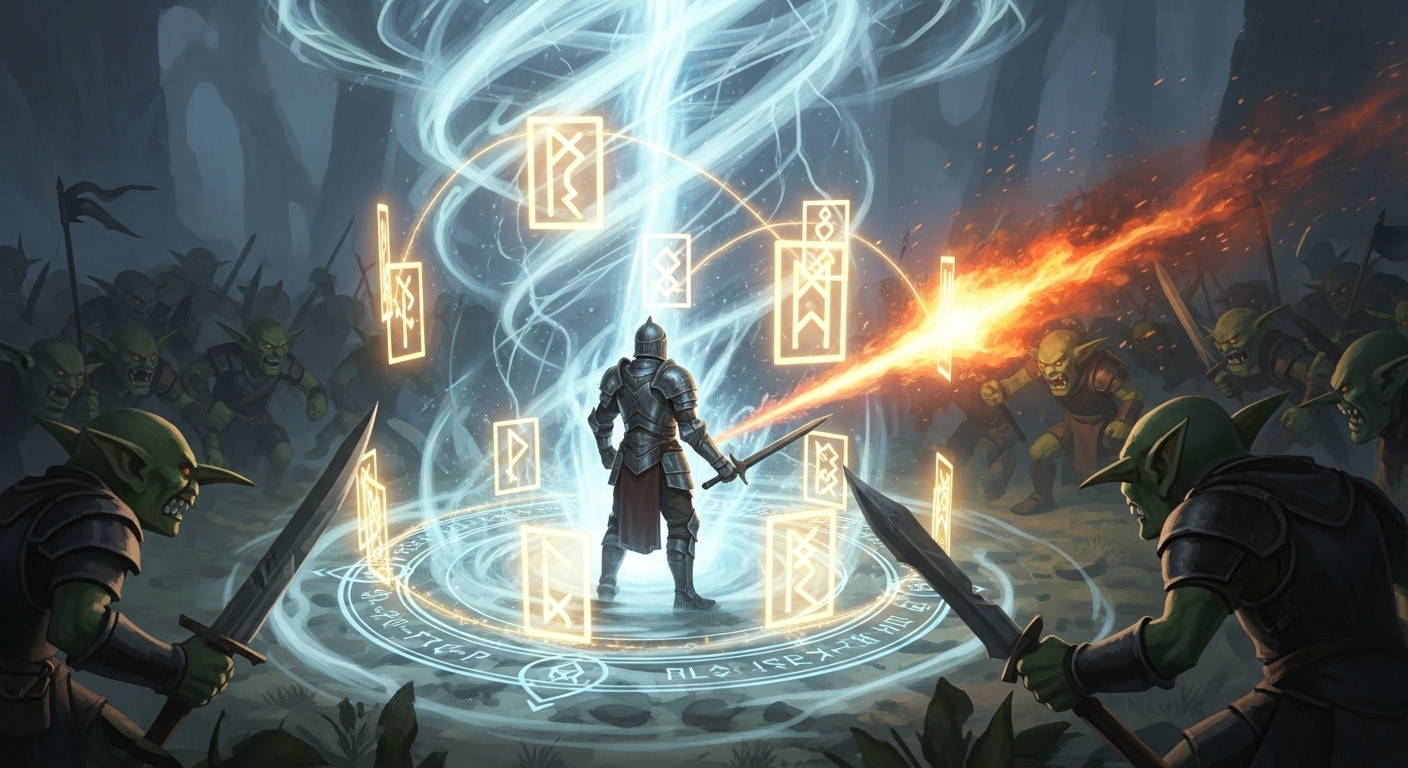Resistance

- Level: Cantrip
- School: Abjuration
- Class: Cleric, Druid
- Casting Time: Action
- Range: Touch
- Components: V, S
- Duration: Concentration, up to 1 minute
You touch a willing creature and choose a damage type: Acid, Bludgeoning, Cold, Fire, Lightning, Necrotic, Piercing, Poison, Radiant, Slashing, or Thunder. When the creature takes damage of the chosen type before the spell ends, the creature reduces the total damage taken by 1d4. A creature can benefit from this spell only once per turn.
Tactical Usage
Targeted Damage Reduction. Resistance provides predictable damage mitigation against specific damage types, making it valuable when facing known threats or environmental hazards.
Concentration Efficiency. The 1-minute duration with concentration provides sustained protection that justifies the magical focus investment for extended encounters.
Broad Damage Type Coverage. The spell affects eleven different damage types, providing flexibility for various threat scenarios and enemy capabilities.
Spell Combinations
Damage Type Prediction. Combining with detection magic or knowledge checks helps identify optimal damage type selection for maximum protective value.
Defensive Layering. Pairing with other protective effects creates comprehensive defense packages without overlapping the same protective mechanisms.
Party Coordination. Using multiple Resistance spells allows protection of several party members against anticipated damage types.
Material Component Details
Component-Free Convenience. Resistance requires no material components, making it accessible and repeatable without resource constraints or preparation concerns.
Touch Range Requirement. The spell requires physical contact with willing targets, necessitating proximity for protective magic application.
Concentration Investment. The spell requires ongoing concentration but provides reliable damage reduction that justifies the magical focus.
Creator Notes
Predictable Protection. Resistance offers consistent damage reduction that scales with character progression through hit point increases rather than spell scaling.
Resource Management Tool. The cantrip provides economical protection that doesn't consume spell slots while requiring concentration trade-offs.
Damage Type Strategy. The spell encourages tactical thinking about enemy capabilities and damage type optimization.
Environmental Interactions
Environmental Hazard Protection. Resistance provides excellent protection against environmental damage sources like extreme heat, cold, or elemental exposure.
Damage Type Frequency. The spell's effectiveness varies with encounter design and enemy damage type distributions in specific campaign settings.
Single Target Limitation. Each casting affects only one creature, requiring multiple casters or repeated applications for party-wide protection.
Common Rulings & Clarifications
Damage Reduction Mechanics. The spell reduces damage by 1d4 points when the target takes the specified damage type, calculated before applying to hit points.
Once Per Turn Limitation. Each target can benefit from damage reduction only once per turn, preventing multiple applications in single rounds.
Damage Type Selection. Casters choose the protected damage type at casting, requiring advance knowledge or educated guessing about likely threats.
Duration and Concentration. The spell lasts up to 1 minute with concentration, ending early if the caster loses focus or chooses to end it.
Alternative Applications
Occupational Safety. Providing protection for crafters, researchers, or workers dealing with specific damage types in their professional activities.
Environmental Exploration. Reducing damage from known environmental hazards during exploration of dangerous terrain or magical locations.
Social Protection. Offering limited protection during social encounters that might involve specific damage types or magical effects.
Related Spells
Protection Magic Progression. Protection from Energy provides resistance to energy types, while other protective spells offer different defensive mechanisms.
Cantrip Alternatives. Guidance provides bonus enhancements, while other cantrips offer utility rather than defensive capabilities.
Damage Reduction Effects. Various spells and abilities provide damage reduction through different mechanisms and scaling approaches.
Scaling Analysis
Consistent Utility Value. Resistance maintains relevance throughout character progression as damage reduction benefits scale with increasing damage amounts.
Resource Independence. As a cantrip, Resistance provides unlimited protection that becomes increasingly valuable as spell slots are preserved for combat applications.
Campaign Integration. Effectiveness scales with damage type frequency and predictability in specific encounters and campaign environments.
Narrative Flavor
Protective Aura Manifestation. The spell should create subtle but visible signs of magical protection appropriate to the chosen damage type.
Damage Type Visualization. Different damage types might manifest unique protective effects - fire resistance as cooling auras, cold resistance as warming energy.
Divine or Natural Blessing. The protection can be described as divine favor, natural resilience, or magical enhancement that fortifies against specific threats.